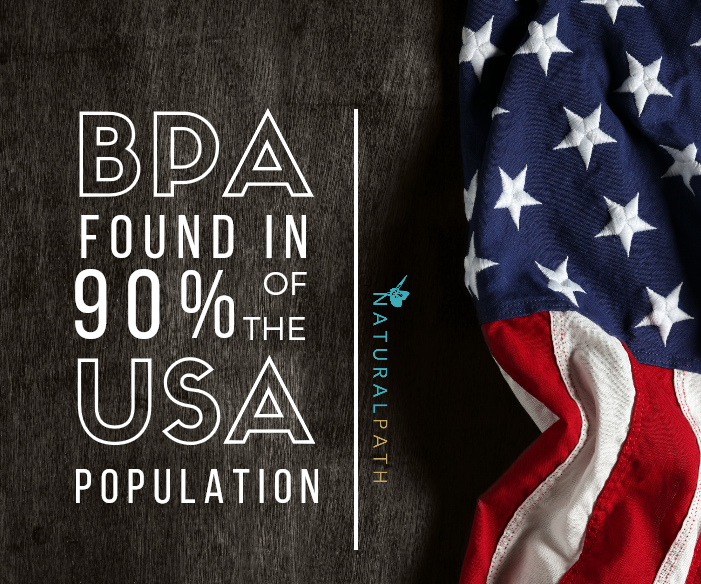Back to school is inadvertently a stressful time for parents. You’re rushing from place to place, getting your kids ready and hoping that it will be another happy and safe year for them. That despite all the changes and challenges they might go through, they’ll remain strong and happy. As parents, you do everything you can to keep your kids safe. But how do you protect them from what is hidden from you, like harmful chemicals?
 Chemicals are everywhere and awareness and understanding of their adverse effects is significantly lacking. Collectively called Endocrine Disrupting Chemicals (EDCs), parabens, Bisphenol A (BPA), triclosan, phthalates and 4NP alter the body’s own natural balance of hormones, especially estrogen, by 1) mimicking hormones, 2) blocking hormone receptor sites or 3) triggering inappropriate hormone activity.1 EDCs have been associated with allergies, cancers, reproductive difficulties and behavioural and learning disorders.2 Of particular concern is their ability to affect key developmental periods such as puberty.1
Chemicals are everywhere and awareness and understanding of their adverse effects is significantly lacking. Collectively called Endocrine Disrupting Chemicals (EDCs), parabens, Bisphenol A (BPA), triclosan, phthalates and 4NP alter the body’s own natural balance of hormones, especially estrogen, by 1) mimicking hormones, 2) blocking hormone receptor sites or 3) triggering inappropriate hormone activity.1 EDCs have been associated with allergies, cancers, reproductive difficulties and behavioural and learning disorders.2 Of particular concern is their ability to affect key developmental periods such as puberty.1
In a 2015 study, urine samples were obtained from 50 children and analyzed for 10 different chemical metabolites, including BPA, phthalates, and parabens.3 14% of children had all 10 chemicals present, 28% had measurable levels of 4NP and all 50 children had detectible levels of at least five chemicals in their urine and at least one chemical in each class.3 BPA has been found in 90% of the US population age six and over, with the highest concentrations in children ages 6-11.1 Although awareness regarding chemicals like BPA has increased, these chemicals stay in your body for prolonged periods of time due to long half-lives. It’s not whether your child has chemicals, but the amount that they have accumulated in their bodies. Chemicals are everywhere.
Types & Sources of Chemicals
Parabens2,3
- cosmetics
- pharmaceuticals
- antimicrobial preservatives against told
- in food and beverage packaging
Bisphenol A (BPA)3
- baby bottles
- water bottles
- food containers
- linings of metal food cans
Triclosan3
- antibacterial hand soaps
- toothpastes
- household cleaning supplies
Phthalates3
- personal care products
- plastic toys
- Foods (chewing gum, soft drinks, mineral water bottles)
4NP is used in cleaning products, plastics, rubber and hair products.3
The Evidence for Chemicals causing Behavioural and Learning Difficulties
Harmful chemicals have been shown to have numerous effects on the brain, suggesting a potential mechanism for behavioural and learning difficulties. Both BPA and phthalates are known neurotoxic agents4, with evidence that BPA affects brain development and gene expression. Animal studies show that BPA induces the loss of functional brain tissue in the prefrontal cortex and hippocampus.5 This loss of functional brain tissue has also been detected in Autism Spectrum Disorder (ASD), Alzheimer’s and schizophrenia.6 BPA also affects development of the forebrain, where behavioural impulses and emotions are regulated.5 Children with prenatal exposure to BPA are at risk for poorer behavioural and cognitive outcomes later on.5
More recently, studies have focused on a potential association between EDCs and ASD. A case-control study of 48 cases of ASD and 41 controls found higher serum BPA concentrations in those with ASD.7 Another study looked at phthalates and BPA levels along with oxidant/ antioxidant status in autistic children. Individuals with higher concentrations of phthalates and BPA had higher concentrations of antioxidants (selenium, superoxide dismutase, glutathione), indicating an increased oxidative load.4 An increased oxidative load has been associated with several chronic health issues including cancer, diabetes and heart disease.4 Although evidence clearly shows that chemicals like phthalates and BPA are neurotoxic, the mechanism is unknown. Future research will explore increased oxidative demands as a potential mechanism for neurotoxicity.4BPA and phthalates also affect fetal and child development by altering thyroid hormone activity. Increased levels of thyroxine (T4) in the blood are suspected of stimulating receptors, leading to attention deficit disorder (ADD/ADHD) symptoms.4
The Evidence for Chemicals Interfering with Hormones, causing Precocious Puberty
The appearance of secondary sexual characteristics in females before the age of 6 and in males, age 9, is considered precocious puberty.1 In the last few decades, the age of onset of puberty has decreased. Studies show that on average, the age of menarche (first menstrual cycle) has decreased by 0.3-0.6 years and females are developing glandular breast tissue 1-2 years earlier.1 Males, too, are reaching various genital stages much earlier. These changes have happened over a short period of time, suggesting an environmental cause, most likely chemicals.1
Two studies have linked phthalate exposure to precocious puberty in girls3 and another found a statistically significant association between urinary concentrations of high-molecular weight phthalate metabolites and later pubic hair development.3 Girls with higher concentrations of EDCs were also found to develop breast and start their menstrual cycles earlier.1 For boys, studies show an inverse relationship between urinary BPA levels and blood testosterone levels in boys ages 12-19 but a positive correlation in girls.2 In animal studies, rodents exposed to BPA before and after puberty showed decreased testosterone levels.2
Puberty marks a time of transition for your child – physically, emotional and mentally. Their bodies undergo changes according to a timeline and the timing of this timeline doesn’t only play a role in their current health but their future health as well. Premature or delayed puberty can be associated with health risks such as obesity and cancers in adulthood.
In the USA, cancer is the leading cause of disease-related deaths among children and adolescents.3 Testicular and ovarian germ-cell cancers are on the rise3 and carcinogenic4 and endocrine-disrupting chemicals such as BPA, phthalates, parabens, 4NP and triclosan should be of great concern.4
The Evidence for Chemicals Causing Immune Issues – Allergies, Infections
Even before your child is born, your child’s immune and respiratory system are susceptible to the effects of toxic chemicals. It has been suggested that these chemicals have long-lasting effects on your child’s ability to fight infections and are associated with an increased risk of allergies. DEHP, a phthalate, is known to be associated with eczema-like lesions in mice.8
Higher urine concentrations of monobenzyl phthalate in mothers during pregnancy increased the risk of food allergy in children during the first 2 years of life.9 In a Spanish study, urine BPA and phthalate levels measured during pregnancy were found to be associated with an increased risk of respiratory issues such as wheezing and chest infections/bronchitis and allergies in children.10 Information was collected at 6, 14 months and 4 and 7 years of age.10
By mimicking estrogen, BPA and to a lesser extent phthalates affect the immune system although the exact mechanism is not yet known. It has been suggested that phthalates influence antibody production and that BPA affects the innate immune response rather than adaptive immunity. DEHP has also been described to alter airway cell differentiation and surfactant protein production which helps our lungs expand and shrink as we breathe.
MEP, another phthalate, has also been associated with lower lung capacities.8 In an Austrian school study, they found a strong inverse correlation between benzylbutyl phthalate and lung function in school children.8 High levels of urine MEP have also been significantly associated with headache, repeated coughing, diarrhea and hormonal problems.18
Supporting your Child’s Ability to Rid Themselves of Chemicals
On a daily basis, avoid plastic containers and canned food. Never put plastic containers into the microwave. Avoid eating burnt foods. Eat organic whenever possible, especially for the dirty dozen produce.
A large majority of chemicals within the body are absorbed through the skin. Avoid chemical- filled cleaning agents. Make your own home cleaning agents whenever possible. Even for the dirtiest places in your home, agents such as vinegar and baking soda can do the job, leaving you at ease, knowing that your home is clean and chemical-free. There are easy, do-it-yourself recipes for cleaning agents, toothpaste, shampoo, face cleansers, and even sunscreen.
Your kids touch and play with you and are exposed to whatever chemicals you might be putting on yourself. Use natural makeup and check your personal hygiene products such as hand lotions to make sure that they are chemical-free.
When you move into a new home, or renovate your home, use air filters to clear the air. Open the windows whenever possible to allow for the chemicals to exit the brand new carpets, the paints etc.
Last but not least, eating a well-balanced diet, with a rainbow of fruits and vegetables, is key to providing your body with the nutrients it needs to cope with chemicals and stay healthy. Chemicals in the environment become a problem when they accumulate, or deplete the body of the nutrients it needs for other functions.
A child’s body is still developing and therefore, more susceptible to the adverse effects of chemicals. Unless something is 100% homemade, it’s impossible to know with absolute certainty if it has harmful chemicals. As a general rule, it’s simply best for both parents and children, to minimize chemical exposure as possible.
 Dr. Olisa Mak is a licensed ND with a general family practice in downtown Vancouver. She has a special interest in bringing awareness to the mind-body connection using homeopathy, botanicals and lifestyle counselling.
Dr. Olisa Mak is a licensed ND with a general family practice in downtown Vancouver. She has a special interest in bringing awareness to the mind-body connection using homeopathy, botanicals and lifestyle counselling.
She is driven to educate, inspire and empower those around her. Everyone has the potential to achieve their dreams and goals but are often unable to because of their fears, perceptions and circumstances. Dr. Mak strives to work with her patients to remove barriers, empowering patients to seize opportunities and to make the life they want a reality.
References:
- Kelishadi, Roya, Parinaz Poursafa, and Ehsan Ataei. “A Systematic Review On The Effects Of Environmental Exposure To Some Organohalogens And Phthalates On Early Puberty”. Journal of Research in Medical Sciences 20.6 (2015): 613. Web.
- Scinicariello, Franco and Melanie C. Buser. “Serum Testosterone Concentrations And Urinary Bisphenol A, Benzophenone-3, Triclosan, And Paraben Levels In Male And Female Children And Adolescents: NHANES 2011-2012”. EHP (2016): n. pag. Web.
- Ihde, Erin Speiser, Ji Meng Loh, and Lawrence Rosen. “Association Of Environmental Chemicals & Estrogen Metabolites In Children”. BMC Endocrine Disorders 15.1 (2015): n. pag. Web.
- Kondolot, Meda et al. “Plasma Phthalate And Bisphenol A Levels And Oxidant-AntioxidantStatus In Autistic Children”. Environmental Toxicology and Pharmacology 43 (2016):149-158. Web.
- Arbuckle, Tye E. et al. “Bisphenol A, Phthalates And Lead And Learning And Behavioral Problems In Canadian Children 6–11 Years Of Age: CHMS 2007–2009”. NeuroToxicology 54 (2016): 89-98. Web.
- Penzes, Peter et al. “Dendritic Spine Pathology In Neuropsychiatric Disorders”. Nature Neuroscience 14.3 (2011): 285-293. Web.
- Fujiwara, Takeo et al. “Chemicals, Nutrition, And Autism Spectrum Disorder: A Mini-Review”. Front. Neurosci. 10 (2016): n. pag. Web.
- Wallner, Peter et al. “Phthalate Metabolites, Consumer Habits And Health Effects”. International Journal of Environmental Research and Public Health 13.7 (2016): 717. Web.
- Stelmach, Iwona et al. “The Effect Of Prenatal Exposure To Phthalates On Food Allergy And Early Eczema In Inner-City Children”. allergy asthma proc 36.4 (2015): 72-78. Web.
- Gascon, Mireia et al. “Prenatal Exposure To Bisphenol A And Phthalates And Childhood Respiratory Tract Infections And Allergy”. Journal of Allergy and Clinical Immunology 135.2 (2015): 370-378.e7. Web.
